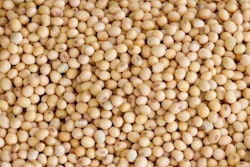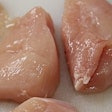
A little less than 70 years ago, a plane from Angola landed in Portugal and left unproperly disposed of food residues with pork. Wild animals consumed those food residues, and African swine fever (ASF) spread throughout the Iberian Peninsula. Its impact lasted until 1995.
This problem — which for decades caused suffering in the Spanish swine industry — has nevertheless served as a benchmark for the current ASF crisis for two primary reasons:
- Because Spain contained the disease in the peninsula
- For eradicating the disease, thanks to the close cooperation between the official veterinarians and the sector
Spain achieved this “because there was a commitment of the sector to eradicate the disease and it had support measures of the Ministry of Agriculture of that time,” said Daniel de Miguel, international director of Interporc in Madrid, the Spanish Inter-Professional Agri-Food Organization of White Pork. It is a nonprofit entity that represents all sectors of the value chain of white pork: production, transformation and marketing.
Biosecurity: the key
For Spain, it has been essential to take actions such as creating protection zones and surveillance areas, besides establishing an operations manual, a regulatory framework, and information cards. Thanks to the strict control, the ASF did not disseminate to other countries, which established an example, culminating with the eradication in 1989.
Since the recognition in 1995 as an ASF-free country, “we have managed to open markets, starting with the European Union, and then negotiate the opening of foreign markets, until becoming today the third largest exporter in the world,” said the Interporc executive.
Biosecurity measures are key. “Since we have the experience of knowing how this disease entered the country, we have generated awareness material, which we at Interporc have actively distributed,” de Miguel said in an exclusive interview, “so as to be careful with immigration control or food waste.”
The ASF virus is highly resistant to the environment and also at low temperatures. It is inactivated with the heat at 56 C for 70 minutes or at 60 C for 20 minutes. If the pork food waste is discarded uncontrollably, it can pass to wild animals, such as the wild boar, which is the main dissemination vector of the disease. That is why it is important to control wildlife.
Biosecurity programs, like the one Spain now has, did not exist when the first event of this very highly virulent exotic disease appeared. Nowadays, with the measures taken, any outbreak could be controlled in a much better way. “We have intensive swine farms with double perimeter fence, which avoid contact with wildlife.”
ASF eradication
The ASF eradication has not been easy because it took many years of struggle and many human and material efforts of private veterinarians and the Spanish administration of that time until the European Union decided to declare it as an ASF-free country. Of course, the entry to the European community was one of the triggers.
The Spanish Ministry of Agriculture developed a large eradication program, in coordination with the swine sector. Its main success was the detection of inapparent carriers, that is, those animals susceptible to transmit the disease even if they themselves do not suffer from it. In other words, they were ahead of the disease by conducting massive checks.
Another fundamental aspect for the eradication was the compulsory slaughter of all the pigs in the affected farms. Without this, the virus is easily transported and disseminated. Another key issue was that swine farmers had the financial support of the Ministry of Agriculture, “which compensated farmers.” If you have to sacrifice the entire farm, it is easier to agree to do so if there is a subsidy.
De Miguel also explained that with this experience, Spanish specialized, studied the means of transmission and that there was a great link among scientists to see how to transfer these control measures. But in the end, everything is pure and plain biosecurity.
Third world pork exporter
Spain is the third largest pork exporter in the world, behind the United States and Germany. With respect to China, it is evident that there are opportunities for the whole world. For Spain, it means increasing the export quota, which currently stands at around 360,000 metric tons (MT) per year.
At the moment, everything is only estimations. Swine production in China may fall around 15 to 20 percent throughout the year, according to estimations. “That is a lot of pigs, a lot of meat, and a demand that grows in China.” However, competition is strong, as there are many countries with authorized plants/companies.
Spain is the second supplier of pork in China. “We are well positioned, but we have to increase the quota,” he said. If China imports 2 million MT, it could import 2.4 million MT. “This increase of 400,000 MT should be taken by the European Union and by Spain in particular.”
Spain exports to China basically frozen meat, but also cured ham, serrano ham (dry-cured Spanish ham), and Iberian ham to a lesser extent. When Chinese President Xi Jinping was in Spain last November, he signed a new protocol that allows shipping of refrigerated meat and cured sausages, which were previously not authorized, increasing the range of products.
View our continuing coverage of the African swine fever outbreak.



















